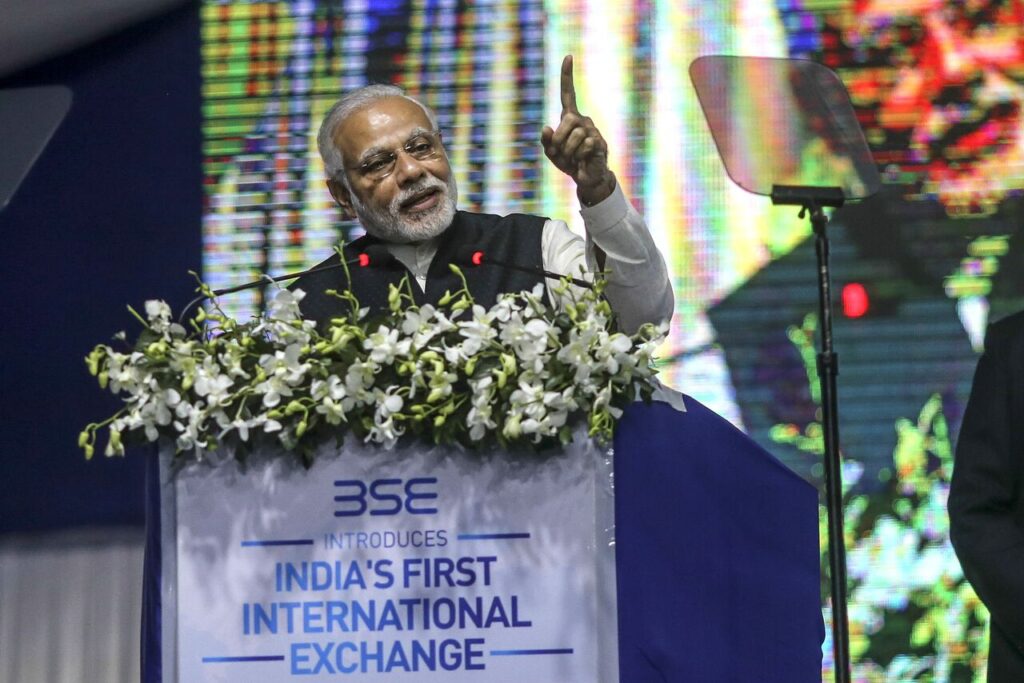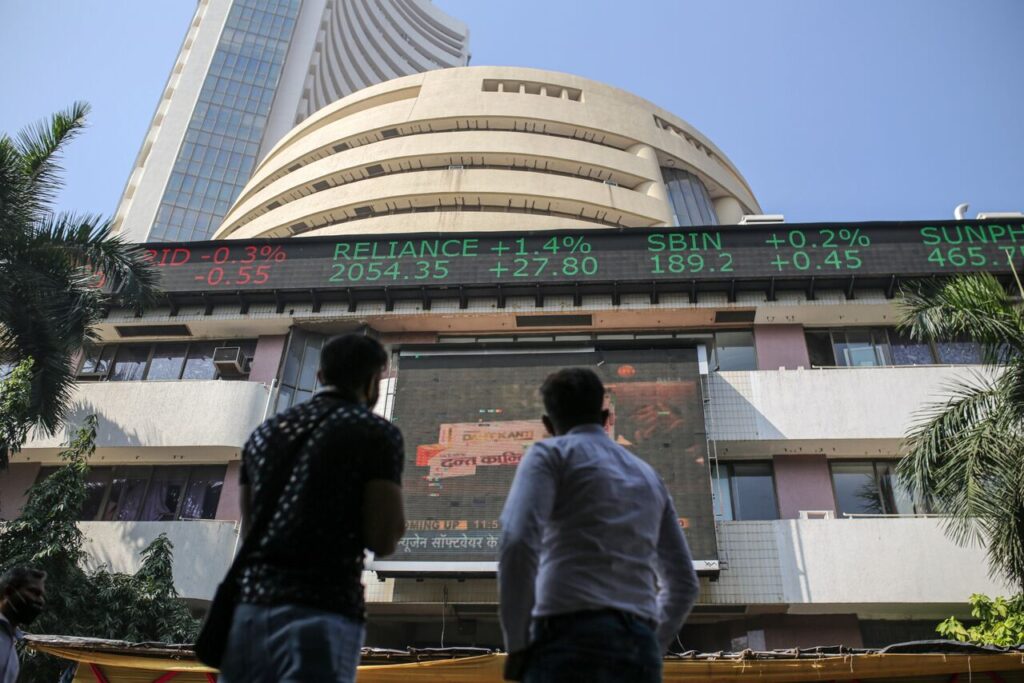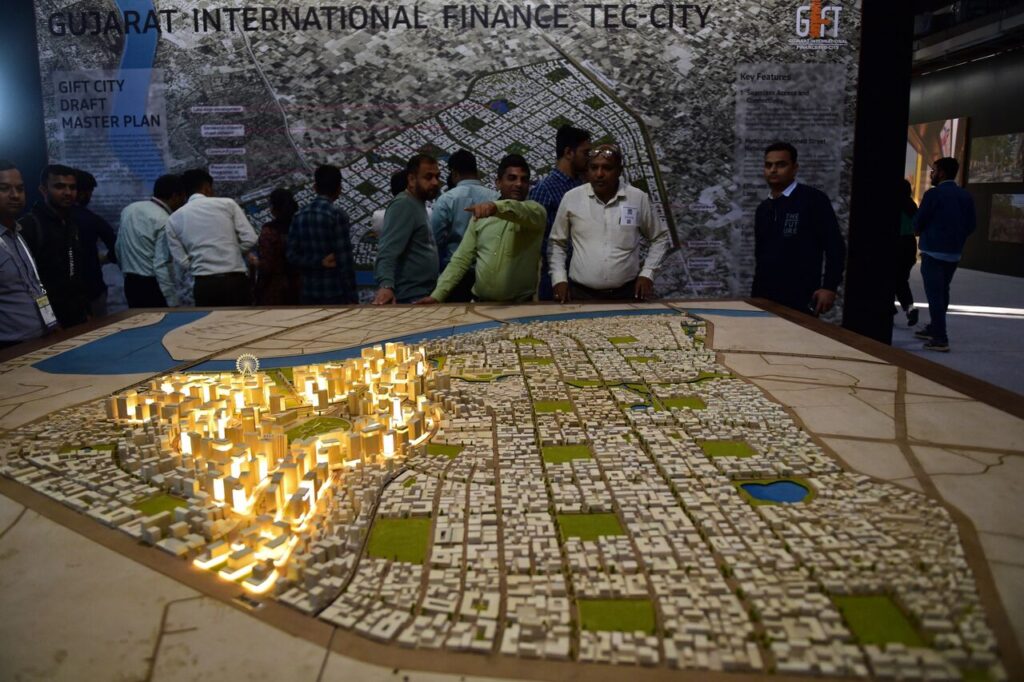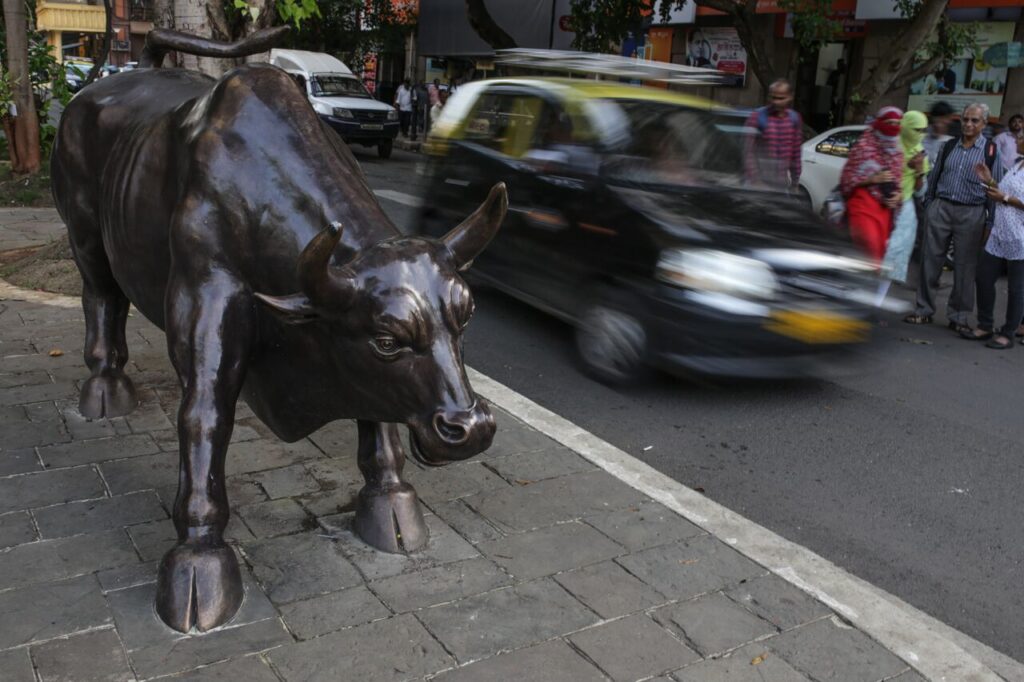Investors Redirect Billions from China to India in Historic Market Realignment
A significant transformation is unfolding in global markets as investors withdraw substantial sums from China’s faltering economy, marking a departure from two decades of placing bets on China as the world’s premier growth engine. Much of this capital is now finding its way to India, with financial titans such as Goldman Sachs Group Inc. and Morgan Stanley endorsing the South Asian nation as the primary investment hub for the coming decade.
This shift in momentum is igniting a frenzy of activity. Marshall Wace, a $62 billion hedge fund, has designated India as its largest net long position after the US in its flagship hedge fund. A division of Vontobel Holding AG, based in Zurich, has elevated India to its top emerging-market holding, while Janus Henderson Group Plc is considering acquisitions within the fund management sector. Even Japan’s traditionally conservative retail investors are embracing India while reducing exposure to China.
Investors are closely monitoring the divergent paths of two of Asia’s powerhouse nations. India, boasting the world’s fastest-growing major economy, has significantly expanded its infrastructure under the leadership of Prime Minister Narendra Modi, aiming to divert global capital and supply chains away from Beijing. In contrast, China is contending with persistent economic challenges and widening fissures with the Western-led international order.
“People are drawn to India for various reasons — one being simply that it’s not China,” remarked Vikas Pershad, Asian equities portfolio manager at M&G Investments in Singapore. “There’s a genuine, long-term growth narrative here.”
While the optimism surrounding India is not new, investors are now more inclined to view the market through a lens reminiscent of China’s past: a vast, dynamic economy progressively opening up to global investment in innovative ways. No one anticipates a seamless journey. India’s population largely resides in poverty, stock markets are costly, and bond markets remain somewhat secluded. Nevertheless, many are crossing over nonetheless, weighing the risks of betting against India against potentially greater risks elsewhere.
Historically, India’s economic expansion and the value of its stock market have been closely intertwined. If the nation continues to grow at 7%, market size can be expected to increase at least at that rate on average. Over the past two decades, gross domestic product and market capitalization have surged in tandem from $500 billion to $3.5 trillion.
Aniket Shah, global head of environment, social, and governance practice at Jefferies Group LLC, noted that a recent investor call about India was among the firm’s most well-attended.
“People are genuinely seeking to understand India’s trajectory,” he remarked.

India has vastly expanded infrastructure under Prime Minister Narendra Modi in his bid to lure global capital and supply lines away from Beijing.Photographer: Dhiraj Singh/Bloomberg
Tracking Capital Movements The direction of capital flows vividly illustrates the prevailing sentiment. In the US exchange-traded fund market, the primary fund investing in Indian stocks witnessed record inflows in the last quarter of 2023, while the cumulative outflows from the four largest China-focused funds amounted to nearly $800 million. Active bond funds have allocated 50 cents to India for every dollar withdrawn from China since 2022, according to EPFR data.
In mid-January, India briefly surpassed Hong Kong to become the world’s fourth-largest equity market. For many investors, the trajectory of the South Asian nation appears upward-bound. Morgan Stanley forecasts that India’s stock market will ascend to the third-largest globally by 2030. Its weighting in MSCI Inc.’s emerging-market equities benchmark has reached an all-time high of 18%, while China’s share has dwindled to its lowest level on record at 24.8%.
“In terms of index weights, China would diminish, and India would expand,” remarked Mark Matthews, the head of Asia research at Bank Julius Baer based in Singapore, which introduced its inaugural India fund last year. “That’s the direction.”
New Entrants Even Japan’s retail investors, historically inclined toward the US market, are increasingly embracing India. Five India-focused mutual funds now rank among the top 20 in terms of inflows. Assets in the largest among them — the Nomura Indian Stock Fund — have reached a four-year peak.
Hedge funds like Marshall Wace cite India’s robust growth and relative political stability as grounds for maintaining optimism regarding consistent growth prospects, notwithstanding the broader market’s lofty valuations.
Karma Capital, entrusted with managing funds in India for institutions like Norges Bank, observes a palpable eagerness among US investors to enter and acquaint themselves with the market. Rajnish Girdhar, the fund’s CEO, recounted a client who responded unusually swiftly to various India-related inquiries.
“We would send something on Friday, and by Monday morning, she would have responded, indicating she was working over the weekend,” he noted.
Historical Rivalry India has adeptly capitalized on shifting power dynamics vis-a-vis China, its long-standing rival.
While China is perceived as a challenge to the Western global order, India emerges as a potential counterbalance — a nation increasingly capable of positioning itself as a viable manufacturing alternative to Beijing. Countries like the US recognize the importance of fostering robust business connections with India, notwithstanding criticisms of the country’s tax policies.
India now contributes over 7% to the global iPhone output and is channeling trillions of rupees into infrastructure upgrades.
These endeavors align with Modi’s vision to present India as the world’s new epicenter of growth. In her interim budget speech last week, Finance Minister Nirmala Sitharaman announced a substantial 11% increase in infrastructure spending to 11.1 trillion rupees ($134 billion) for the upcoming fiscal year.

India now accounts for more than 7% of the iPhone’s global output.Photographer: Dhiraj Singh/Bloomberg
“The investment cycle is gaining momentum with increased public capital expenditure and infrastructure initiatives,” remarked Jitania Kandhari, Deputy Chief Investment Officer for Solutions and the Multi-Asset Group at Morgan Stanley Investment Management.
India is concurrently constructing an expansive ecosystem of technologies designed to integrate a broader population into the digital marketplace. Alphabet Inc.’s Google Pay intends to collaborate with India’s mobile-based payments system — facilitating billions of transactions monthly — to extend its services beyond the nation.
“For the first time, hundreds of millions of Indians have access to bank accounts and credit,” highlighted Ashish Chugh, a money manager at Loomis Sayles & Co. “This development is likely to attract global companies to India, along with global investors.”
Priced for Near Perfection
Despite the growing enthusiasm, some challenges remain. The prevailing optimism has propelled Indian equities to become some of the most expensive in the world. The widely tracked S&P BSE Sensex Index has nearly tripled since its low in March 2020, while earnings have only doubled during the same period. Currently, the index trades at over 20 times future earnings, marking a 27% premium compared to the average valuation from 2010 to 2020.
With valuations stretched and Beijing’s recent interventions to stabilize its markets, some investors are reconsidering their investment strategies. In January, global funds withdrew over $3.1 billion from Indian shares, representing the largest monthly outflow in a year, according to Bloomberg data.
“India’s markets seem to have priced in considerable success,” remarked Mark Williams, a fund manager at Somerset Capital Management. “However, there’s uncertainty regarding how much of this success is already accounted for. There’s a legitimate risk that Indian markets could stagnate for several years.”

The S&P BSE Sensex Index has almost tripled from its March 2020 low, while earnings have only about doubled.Photographer: Dhiraj Singh/Bloomberg
years of annual gains in local shares. With the upcoming national elections, Modi is widely anticipated to secure a third term in office, particularly given his party’s recent victories in state polls, which signal a continuation of existing policies. However, any signs of a weakened ruling party could unsettle the markets in the short term.
“While the state election results suggest continuity in the government, uncertainties always linger,” noted Peeyush Mittal, portfolio manager at Matthews International Capital Management LLC.
Modi’s social agenda, which some critics argue favors the Hindu majority, poses a challenge to stability in a nation where more than 200 million religious minorities reside. Transforming India’s potential into tangible economic benefits for all citizens remains a formidable task, especially in a multilingual democracy with significant cultural disparities among states.
“India still has a considerable journey ahead,” remarked Charles Robertson, head of macro strategy at FIM Partners Ltd. “The potential peak growth is still below what China managed to achieve.”

The Indian government development GIFT City — a free market pilot project in western India that aspires to become a global financial hub unhampered by rules and taxes.Photographer: Sam Panthaky/AFP/Getty Images
Looking at the broader perspective, proponents of India’s growth trajectory assert that they are investing with a long-term perspective in mind. Despite inherent risks such as potential scandals, social divisions, and political turbulence, supporters argue that India’s journey towards becoming a $8 trillion-plus economy in the next decade justifies enduring through volatility.
Aninda Mitra, head of Asia macro and investment strategy at BNY Mellon Investment Management, highlights that while challenges exist, the anticipated economic growth outweighs short-term uncertainties.
India’s traditionally isolated financial markets are progressively opening up. With foreign ownership hovering just above 2%, the nation’s $1.2 trillion sovereign-bond market will be included in JPMorgan Chase & Co’s global debt index starting June. This move is anticipated to attract up to $100 billion in inflows over the coming years, according to HSBC Asset Management.
Additionally, India is intensifying efforts to internationalize the rupee, albeit on a more modest scale compared to China’s yuan expansion. The government’s establishment of GIFT City, a free market pilot project in western India aspiring to become a global financial hub free from conventional regulations and taxes, holds promising potential reminiscent of Shenzhen’s emergence as a special economic zone in 1980.
Confidence in India’s future stems not just from the immediate prospects of its stocks and bonds but also from the long-term implications of these initiatives, notes Gaurav Narain, a money manager advising India Capital Growth Fund.
“There’s no longer a need to sell the India story,” Narain asserts. “It’s about buying into India for those who recognize the positive transformations underway.”

